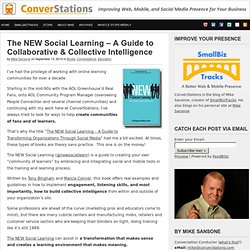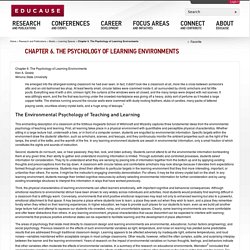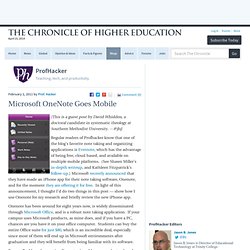

Cognitive load. In cognitive psychology, cognitive load is the load related to the executive control of working memory (WM).

Theories contend that during complex learning activities the amount of information and interactions that must be processed simultaneously can either underload or overload the finite amount of working memory one possesses. All elements must be processed before meaningful learning can continue.[1] Cognitive load theory[edit] The history of cognitive load theory[edit] In the late 1980s John Sweller developed cognitive load theory (CLT) while studying problem solving.[2] Studying learners as they solved problems, he and his associates found that learners often use a problem solving strategy called means-ends analysis. In the 1990s, cognitive load theory was applied in several contexts. Types[edit] Intrinsic[edit] Intrinsic cognitive load is the inherent level of difficulty associated with a specific instructional topic. Extraneous[edit] Germane[edit] Measurement[edit] Some are. The NEW Social Learning - A Guide to Collaborative & Collective Intelligence. I’ve had the privilege of working with online learning communities for over a decade.

Starting in the mid-90s with the AOL Greenhouse’d Real Fans, onto AOL Community Program Manager (overseeing People Connection and several channel communities) and continuing with my work here at ConverStations, I’ve always tried to look for ways to help create communities of fans and of learners. That’s why the title “The NEW Social Learning – A Guide to Transforming Organizations Through Social Media” had me a bit excited. At times, these types of books are theory sans practice. This one is on the money! The NEW Social Learning (@newsociallearn) is a guide to creating your own “community of learners” by embracing and integrating social and mobile tools in the training and learning process.
The NEW Social Learning can assist in a transformation that makes sense and creates a learning environment that makes meaning. Here’s a video look at what some learning execs are talking about: Virtual Social Worlds and the Future of Learning. Wikis in University Teaching and Learning - Richard Buckland UNSW. Learning Styles Don't Exist. eLearning Learning.
The Academic Culture and the IT Culture: Their Effect on Teachin. © 2004 Edward L. Ayers EDUCAUSE Review, vol. 39, no. 6 (November/December 2004): 48–62. Edward L. Ayers Edward L. A year ago, my colleague Charles Grisham and I wrote an EDUCAUSE Review article entitled "Why IT Has Not Paid Off As We Hoped (Yet). " The Invisible Success of IT Those of us who have been involved for a while in the long courtship between higher education and information technology can recall many ups and downs in the last thirty years or so.2 We remember when we first saw Mosaic, Netscape, and the World Wide Web.
In particular, we waited for the time when the very heart of education—the classroom and the scholarship taught in that classroom—would be transformed. Very real technological accomplishments have tended to become invisible because they have been so successful. Similarly, college and university IT professionals have done more than anyone has asked them to do. The Academic and IT Cultures Nobody seems to like the word academic. 1. 2. 3. 4. 5. So what should be done? Chapter 6. The Psychology of Learning Environments. Chapter 6.

The Psychology of Learning Environments Ken A. Graetz Winona State University He emerged into the strangest-looking classroom he had ever seen. The Environmental Psychology of Teaching and Learning This enchanting description of a classroom at the fictitious Hogwarts School of Witchcraft and Wizardry captures three fundamental ideas from the environmental psychology of teaching and learning. Second, students do not touch, see, or hear passively; they feel, look, and listen actively. Third, the physical characteristics of learning environments can affect learners emotionally, with important cognitive and behavioral consequences.
Microsoft OneNote Goes Mobile. [This is a guest post by David Whidden, a doctoral candidate in systematic theology at Southern Methodist University. -- @jbj] Regular readers of Profhacker know that one of the blog’s favorite note taking and organizing applications is Evernote, which has the advantage of being free, cloud based, and available on multiple mobile platforms.

(See Shawn Miller’s in-depth writeup, and Kathleen Fitzpatrick’s follow-up.) Microsoft recently announced that they have made an iPhone app for their note taking software, Onenote, and for the moment they are offering it for free. In light of this announcement, I thought I’d do two things in this post — show how I use Onenote for my research and briefly review the new iPhone app. Onenote has been around for eight years now, is widely disseminated through Microsoft Office, and is a robust note taking application. Click for larger size These tags come in handy when you run a tag summary report, which takes all of your tags and collates them. Intelligence Collective. LearningInTheWild_ of_a_VirtualWorld.